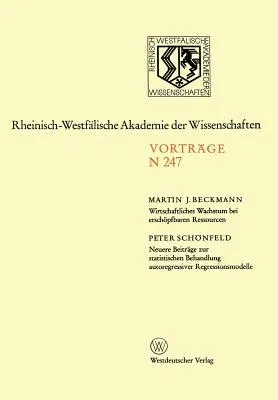Martin J Beckmann
(Author)Wirtschaftliches Wachstum Bei Erschöpfbaren Ressourcen: Neuere Beiträge Zur Statistischen Behandlung Autoregressiver Regressionsmodelle (1975)Paperback - 1975, 1 January 1975

Qty
1
Turbo
Ships in 2 - 3 days
In Stock
Free Delivery
Cash on Delivery
15 Days
Free Returns
Secure Checkout
Part of Series
Rheinisch-Westfälische Akademie Der Wissenschaften
Part of Series
Rheinisch-Westfalische Akademie Der Wissenschaften
Print Length
52 pages
Language
German
Publisher
Vs Verlag Fur Sozialwissenschaften
Date Published
1 Jan 1975
ISBN-10
3531082477
ISBN-13
9783531082479
Description
Product Details
Author:
Book Edition:
1975
Book Format:
Paperback
Country of Origin:
US
Date Published:
1 January 1975
Dimensions:
24.41 x
16.99 x
0.3 cm
ISBN-10:
3531082477
ISBN-13:
9783531082479
Language:
German
Location:
Wiesbaden
Pages:
52
Publisher:
Series:
Weight:
104.33 gm

